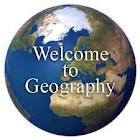The Age of Exploration or Age of Discovery as it is sometimes called, officially began in the early 15th century and lasted until the 17th century. The period is characterized as a time when Europeans began exploring the world by sea in search of trading partners, new goods, and new trade routes. In addition, some explorers set sail to simply learn more about the world. Whatever their reasons though, the information gained during the Age of Exploration significantly helped in the advancement of geographic knowledge.
Reasons for Exploration and Key Voyages
Though the desire to simply explore the unknown and discover new knowledge is a typical human trait, the world's famous explorers often lacked the funding needed for a ship, supplies, and a crew to get underway on their journeys. As a result, many turned to their respective governments which had their own desires for the exploration of new areas. Many nations were looking for goods such as silver and gold but one of the biggest reasons for exploration was the desire to find a new route for the spice and silk trades. When the Ottoman Empire took control of Constantinople in 1453, it blocked European access to the area, severely limiting trade. In addition, it also blocked access to North Africa and the Red Sea -- two very important trade routes to the Far East.
The first of the journeys associated with the Age of Discovery were conducted by the Portuguese under Prince Henry the Navigator. These voyages were different than those previously conducted by the Portuguese because they covered a much larger area. Earlier sailors relied on portolan charts which are maps created for navigators based off of land features. Because these charts relied on the ability to see land, the voyages prior to those conducted by Prince Henry stayed along the coastlines.
In challenging this form of navigation, the Portuguese sailed out of sight of land and discovered the Madeira Islands in 1419 and the Azores in 1427. The main goal for the Portuguese voyages though was to discover a trade route to West Africa without having to go through the Sahara Desert. By the mid-1400s, this goal was realized and a trading port was established at Elmina in West Africa.
Also during the Age of Discovery were the famed voyages of Christopher Columbus. These voyages started as an attempt to find a trade route to Asia by sailing west. Instead, he reach America in 1492 and shared information on this newly found land with Spain and the rest of Europe. Shortly thereafter, the Portuguese explorer Pedro Alvares Cabral explored Brazil, setting off a conflict between Spain and Portugal in terms of the newly claimed lands. As a result, the Treaty of Tordesillas officially divided the world in half in 1494.
Some other important voyages of exploration that took place during the Age of Exploration were Ferdinand Magellan's attempted circumnavigation of the globe, the search for a trade route to Asia through the Northwest Passage, and Captain James Cook's voyages that allowed him to map various areas and travel as far as Alaska.
The End of the Age of Exploration
The Age of Exploration ended in the early 17th century after technological advancements and increased knowledge of the world allowed Europeans to travel easily across the globe by sea. In addition, the creation of settlements along the coasts of the newly found areas created a network of communication and trade, therefore ending the need to search for trade routes. Though the Age of Exploration officially ended in the 17th century, it is important to note however that the exploration did not cease entirely at this time. Eastern Australia was not discovered until 1770 and the Arctic and Antarctic areas were not heavily explored until the 19th century. Much of Africa also was also unexplored until the 19th and even early 20th centuries.
Contributions to Geography
Even though much of the travel during the Age of Exploration was done in an effort to find new trade routes, it did have a significant impact on geography. By traveling to different regions around the globe, explorers were able to learn more about areas like Africa and the Americas. In learning more about such places, explorers were able to bring knowledge of a larger world back to Europe. In addition to just learning about the presence of the lands themselves, these explorations often brought various new species (important to biogeography) and new cultures of people to light. For example, Cook's voyages brought back a significant amount of information from previously unvisited parts of the world.
Methods of navigation and mapping also improved as a result of the travels of people like Prince Henry the Navigator. Prior to his expeditions, navigators used traditional portolan charts which kept them tied to the shoreline. Among the many goals of his expeditions were to develop a new nautical chart so future sailors could sail out of sight of land. He did so, creating one of the first nautical maps. These would later be further refined by explorers like Vasco De Gama, Columbus, and Cabral.



